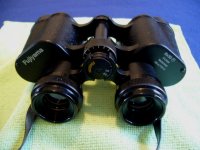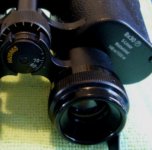I have had this in my gallery a while now, but a comment this week made me think it might be worth posting on here. The comment was how strange to see a Japanese logo on a Komz BNU 8x30. It is strange. Simon has already commented that it is a Russian copy of the Jenoptem, but it is a strange binocular. It is very good, looks like new, and performs slightly better than the Komz that I have as it does not have that yellow tint, and it is pretty nigh as good as my Zeiss Jenoptem, but what we have here is an identical style to the Russian Komz, with the Japanese Fujiyama logo, Weitwinkel, the German word for wide field, and 5 Linser, which I believe is Swedish for 5 Lenses. And it was purchased in the UK. I have not seen another like this, bit of a mongrel, but I like it, it's a very good instrument..
-
Welcome to BirdForum, the internet's largest birding community with thousands of members from all over the world. The forums are dedicated to wild birds, birding, binoculars and equipment and all that goes with it.
Please register for an account to take part in the discussions in the forum, post your pictures in the gallery and more.
FUJIYAMA-8X30 Weitwinkel / Komz lookalike (1 Viewer)
- Thread starter Bencw
- Start date






